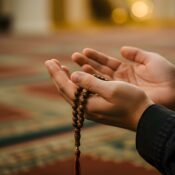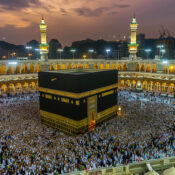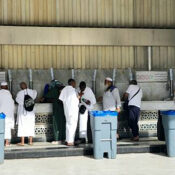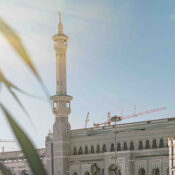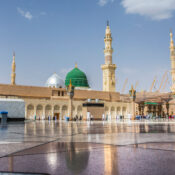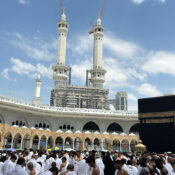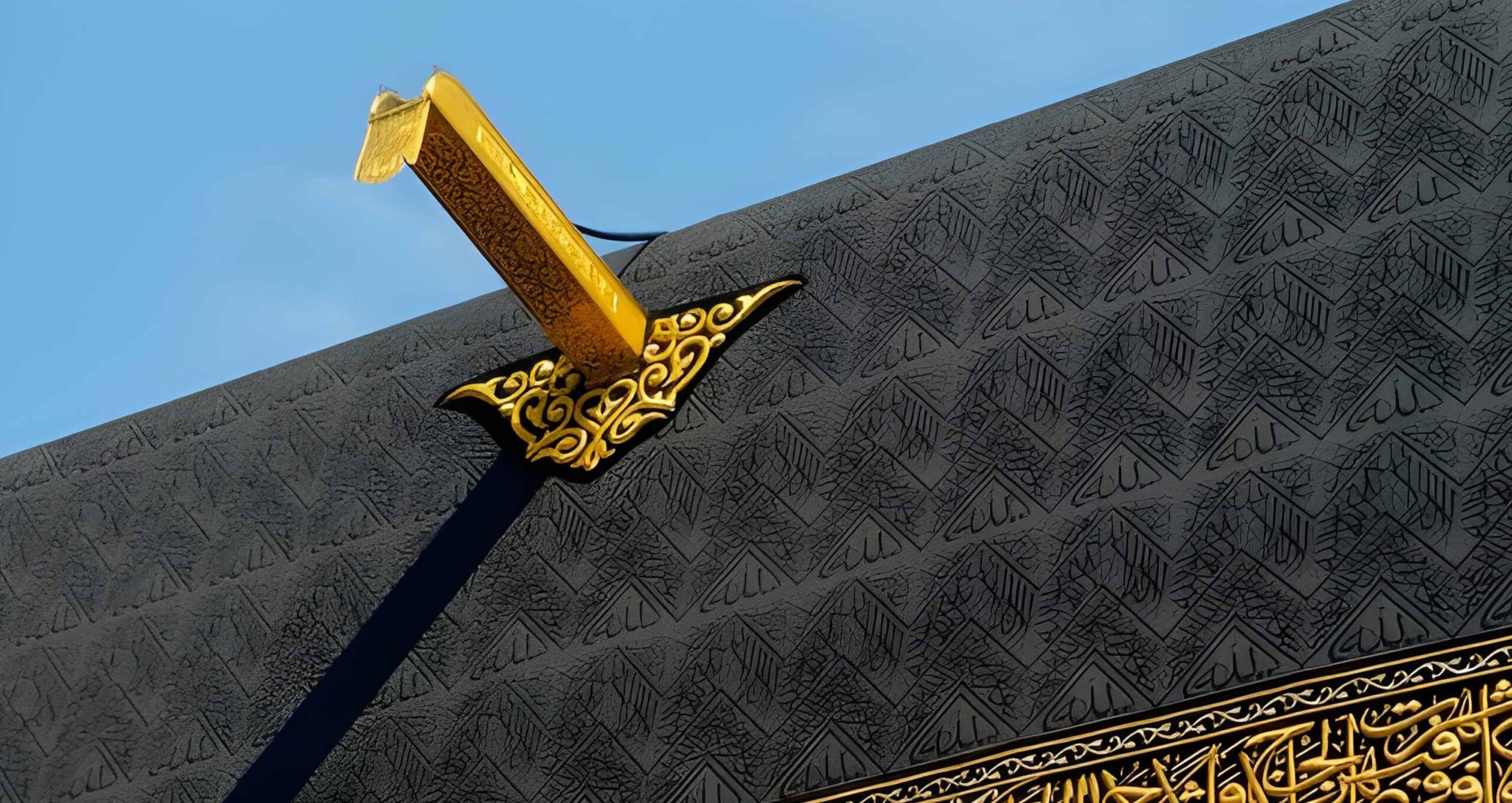
Meezab-e-Rehmat The Outlet of Mercy
When Muslims visit the sacred Kaaba in Makkah, their hearts are filled with awe and reverence for every detail of its blessed structure. Among its features, one of the most remarkable is the Meezab-e-Rehmat—a golden water spout on the roof of the Kaaba, often referred to as the “Outlet of Mercy.” Though small in size, this feature carries immense historical, architectural, and spiritual importance for pilgrims performing Hajj or Umrah.
What Does Meezab-e-Rehmat Signify?
The Meezab-e-Rehmat is the golden spout from which rainwater flows from the Kaaba’s roof directly onto Hijr Ismail (the semicircular area adjacent to the Kaaba). Situated between Rukn-e-Shami and Rukn-e-Iraqi, it is a place of deep reverence.
Islamic tradition narrates that Prophet Muhammad ﷺ supplicated under this spout, making it a spot associated with accepted prayers and divine blessings. Pilgrims often consider the water that flows from the Meezab as spiritually significant and filled with shifa (healing).
The Historical Journey of Meezab-e-Rehmat
The history of Meezab-e-Rehmat is as fascinating as its symbolism:
- Pre-Islamic Era: Initially, the Kaaba’s roof was covered with palm leaves, and there was no spout to channel rainwater.
- Construction by Quraysh: The Quraysh tribe, during their reconstruction of the Kaaba, installed a primitive version of the Meezab to protect the roof and redirect water.
- Ottoman Influence: In 1554 CE, Sultan Suleiman the Magnificent (Sulayman Qanuni) covered the spout with silver. Later, his son, Sultan Selim II, ordered its gold plating in 1553 CE.
- Golden Reconstruction: Between 1586 and 1594 CE, Caliph Waleed Bin Abdul Malik ordered a reconstruction of the spout in pure gold, setting the foundation for what we see today.
- Modern Renovations: Sultan Abdul Majeed Khan remodeled the Kaaba and its Meezab in 1273 A.H. More recently, in 1417 A.H., King Fahd oversaw its redesign while preserving the original dimensions.
On its front, beautiful Arabic inscriptions like “Ya Allah” and “Bismillah Hir Rahman Nir Raheem” adorn the outlet, making it not only a functional element but also a spiritual one.
Architectural Beauty of Meezab-e-Rehmat
The current Meezab-e-Rehmat is an exquisite piece of Islamic craftsmanship:
- Made entirely of pure gold, lined with thick pure silver.
- Rectangular in shape, with a golden pendant (known as Al-Burqa or “the tongue”) that moves slightly back and forth.
- Its sides carry inscriptions noting the dates of various renovations.
- Designed by renowned jeweler Makki Sheikh Nasser, who ensured its durability.
- Spikes have been added to its edges to prevent birds from perching, preserving the sanctity of the Kaaba.
Dimensions of Meezab-e-Rehmat:
- Length: 253 cm (with 58 cm extending into the Kaaba wall).
- Width: 26 cm.
Though relatively small, its presence adds to the magnificence of the Kaaba’s structure.
Five Notable Facts About Meezab-e-Rehmat
- The very first Meezab was constructed using wood, iron, and silver-like materials.
- Before its existence, the Kaaba’s roof was made from palm tree leaves with no outlet for rainwater.
- In 1554 CE, it was adorned with a silver covering under Sultan Suleiman the Magnificent.
- In 1553 CE, Sultan Selim II ordered its gold plating.
- Pilgrims believe that prayers made beneath it are never rejected, making it a sought-after spot for dua during Hajj and Umrah.
Spiritual Importance for Pilgrims
For pilgrims, the Meezab-e-Rehmat is more than just a golden spout—it is a symbol of Allah’s mercy. Standing under it, in Hijr Ismail, believers pour their hearts out in supplication, seeking forgiveness, blessings, and healing. Many pilgrims even consider the rainwater falling from it as a sign of divine acceptance.
Final Thoughts
Though the Meezab-e-Rehmat is one of the smallest architectural features of the Kaaba, its significance is immense. Umrah Packages 2025 It represents a legacy of faith, history, and craftsmanship, reminding us of Allah’s mercy and the blessed heritage of the Kaaba.
For every pilgrim who gazes upon it, the Meezab-e-Rehmat serves as both a symbol of divine grace and a reminder of the countless supplications made beneath it throughout history.


